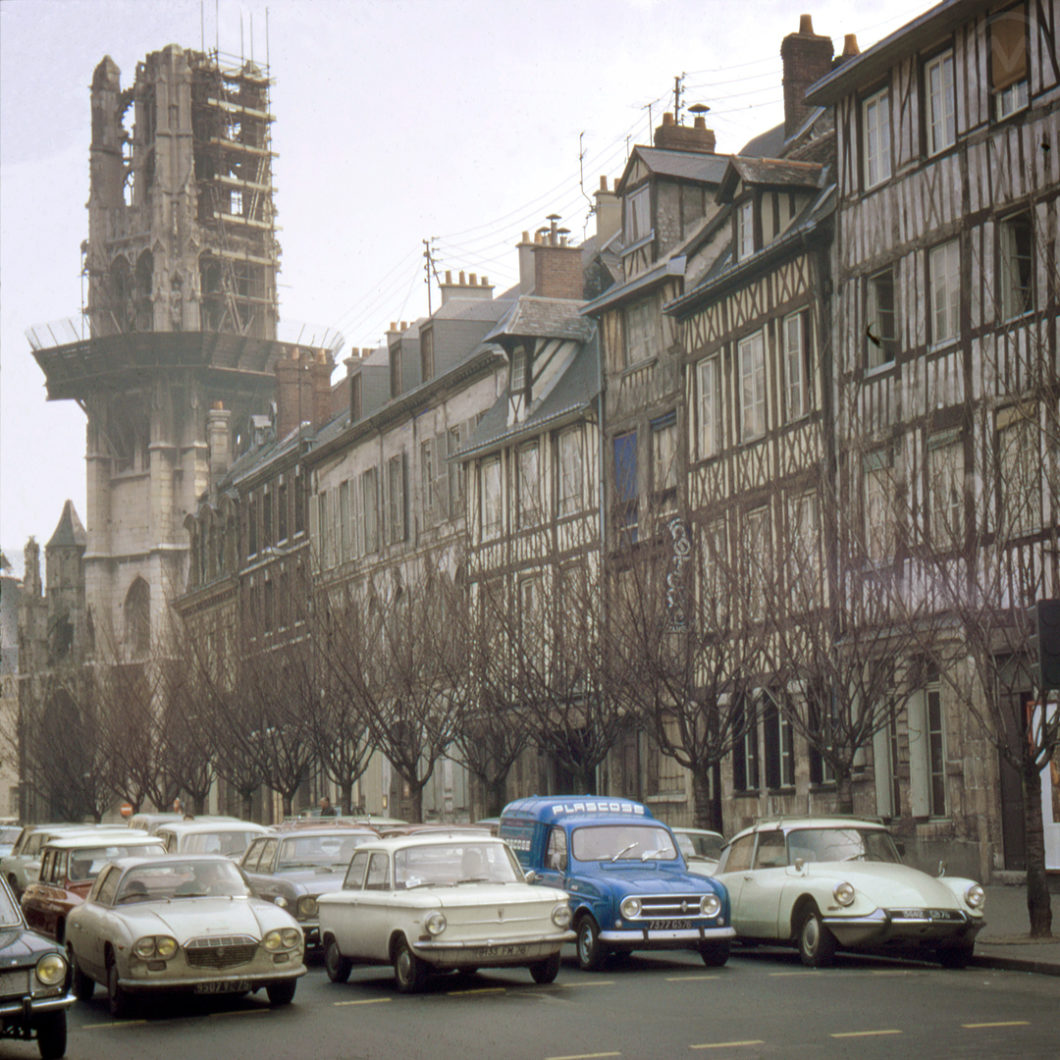A Sunday flashback today to 1970s France and a spectacularly diverse array of machines that were, at the time, just people’s regular cars. So where are we? Rouen, more specifically Rue de l’Écureuil, circa 1971.
In the background is L’église Saint-Laurent, first constructed in the year 1024 and successively burned down, broken down, rebuilt, renovated, damaged by natural disasters, and then rebuilt and reworked again. It always played second fiddle to the much larger nearby three-towered Rouen Cathedral and ceased being a Church way back in 1791.
Since 1920 it has housed the Musée Le Secq des Tournelles, dedicated to historic ironworks, and that’s appropriate since you’re here to hear about all the amazing metal in this picture.
What are these unusual cars? One is unusual anywhere, but this quite a kaleidoscope of cars. From left to right: A Lancia Flavia Sport, an NSU Prinz 4, a Renault 4 Van, and a Citroën ID19. Detailed views follow below.
In the periphery, you can see a Simca 1200, an Opel Kadett, a Citroën Ami, and what looks like a Peugeot 403, a typical French street scene of the late 1960s/early 1970s. Except for the Lancia, of course.
Lancia Flavia Sport Zagato
The actual number of Flavia Sports built is disputed. Some sources say as few as 594, some as many as 725. Popular consensus is 626. In any case, that’s a tiny number of cars and the Sport was a truly exotic and unusual car even when it was new.
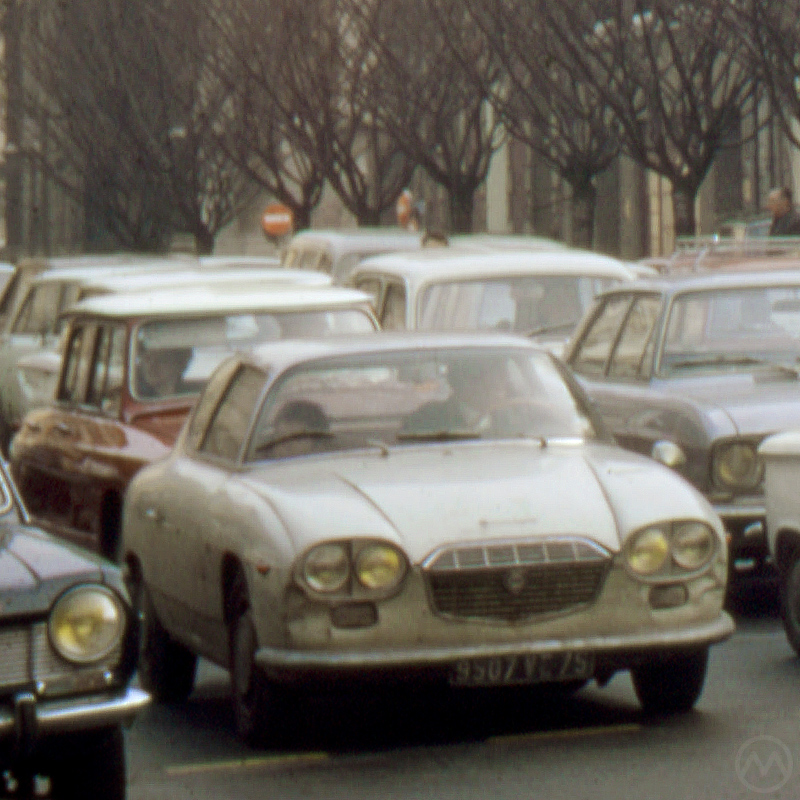
Lancia’s Flavia was designed by its late 1950s technical director, Prof. Antonio Fessia, who had experimented with advanced front drive cars for over a decade prior to the Flavia. It was an advanced car for the 1960s – all-disc brakes, front-wheel drive, a flat-four engine way upfront which eventually got fuel injection. It was built like a swiss watch, and Lancia’s new owners, the Pesenti family, hoped that it and the related Fulvia would put money into the company’s coffers.
There were, of course, coupe versions planned from the start, primarily Pininfarina’s mass-produced steel coupe, which survived until the end of Flavia production after the company had been sold to Fiat and the model renamed “Lancia 2000.” In typical Lancia fashion though, there were also coachbuilt offerings: a Michelotti-styled, Vignale-built convertible for Milanese Jetsetters and the Sport, a lightweight coupe by Zagato.
The Flavia Sport was bodied in aluminum and weighed 200 lbs. less than the steel coupe, and Lancia hoped it would win rallies and get attention. It did win a few rallies, but the 1,488-cc Flavia engine proved less than up to the task. The enlarged 1,800-cc version did much better, but even in 1964-65 it was obvious that the Fulvia was a better competition car, so the Sport had a relatively short life as a racer.
It did, however, get attention pretty much everywhere it went – because it looked like a UFO. Penned by Ercole Spada during his long tenure at Zagato, the Sport bowed in 1962 and looked like nothing else on the road.
The uneven greenhouse with conventional side windows but a windshield and quarter windows that blended into the roof with compound curves weren’t the only unusual flourishes. The Flavia Sport Zagato is probably the most unusual-looking “production” car ever to come from Zagato, and while it was wind-cheating, it wasn’t wind-tunnel tested.
The Flavia Sport Zagato was a car for the eccentric fashionista, not the track, although many have been used that way. It remained in production until 1967, by which time Lancia, losing money hand over fist on everything it built, was trying to cut costs any way it could. Fiat bought Lancia in 1969 and nothing this weird ever emerged again.
This particular Sport seems to be a daily driver (no surprise, it can’t be more than 8 years old), and the aluminum bodywork looks a little banged around, probably as a consequence of living in a city like Rouen.
NSU Prinz 4
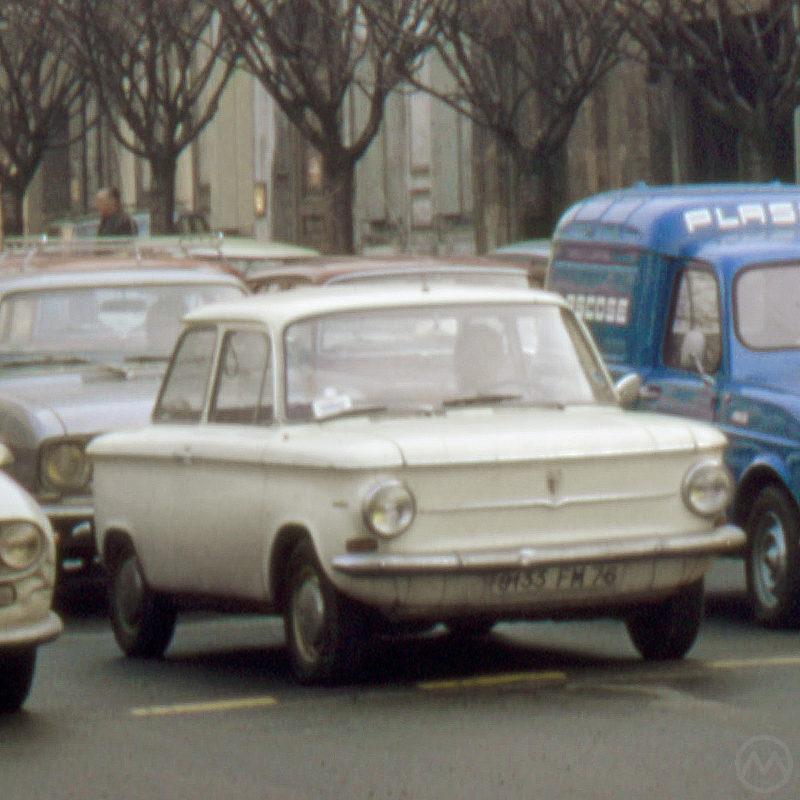
Next up is the NSU Prinz 4. If it looks like a Corvair that shrunk in the wash to you, that’s entirely by design. Ned Nickles’ Corvair styling may not have won the day with American consumers, who generally found the rear-engine Corvair too far out for their tastes, but it inspired many European designs. None more so than the little NSU.
In freshening the style of the tiny Prinz microcars from the 1950s, the team at Neckarsulm thought Nickles’ look was exactly what they needed. The Prinz 4 was a new shell and new design but still used the old heart of the earlier cars: an air-cooled, 598-cc V-twin.
The Prinz 4 would soon grow up into the Prinz 1000, which was, confusingly, a four-cylinder car that eventually became a competition terror as the NSU 1000 TT and TTS. The little Prinz 4, however, was much more humble. The model name eventually became the Prinz 4L and, ultimately, Super Prinz, but stayed almost entirely the same into 1973 when it was replaced by the Audi 50.
The Prinz 4 must have seemed like a car out of time in the early 1970s with its Corvair looks and microcar origins, but there was always demand in Europe for tiny sub-1-liter city cars. Most customers in France, however, probably preferred domestic choices like the 2CV, and the Prinz 4/4L/Super Prinz would have been a very slow boat to anywhere on the Autoroute even compared to 2CVs and Mini 850s.
Renault R4 Fourgonnette
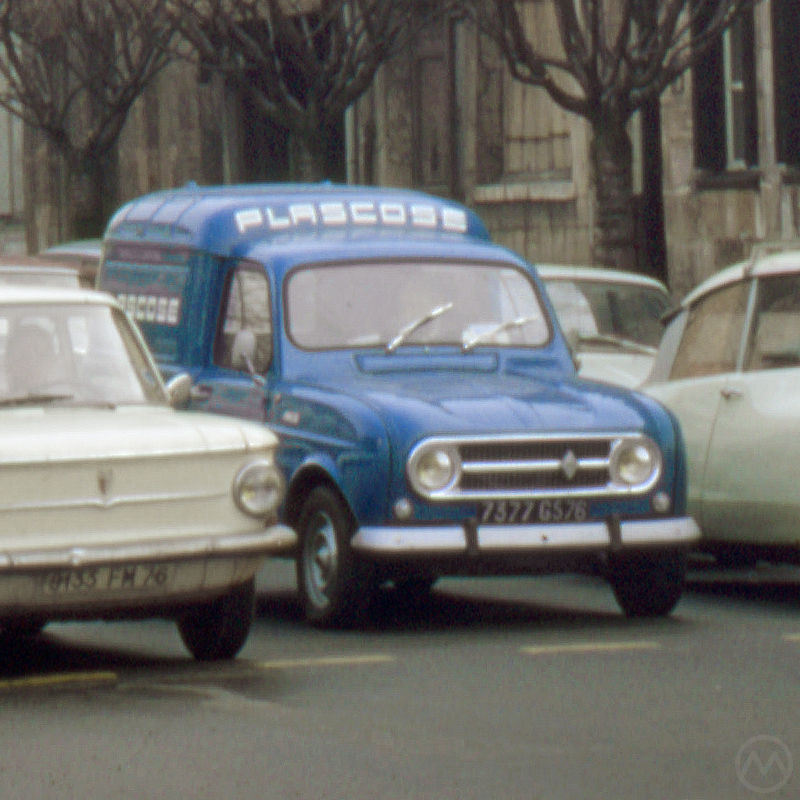
Next to the NSU is a Renault R4 Van or, as it’s called there, Fourgonnette.
R4 Fourgonnettes are still a common sight all over France as it was on sale for 30 years and production continued in Morocco into 1994. Along with Citroën’s 2CV and Dyane truckettes, they served pretty much every kind of business in France from boulongerie to La Poste.
“Plascose” was a floor covering business outside of Rouen, and even in 2020 there are still tradespeople using these trucks every day.
Tough and simple, the R4 was cheap and built to stay that way, with its slide-and-twist gearshift and simple mechanical pieces. Many are still in use today, though they’re not quite as common as they were 20 years ago, when you could still see relatively new ones in front-line service from big companies. Renault ultimately replaced it with the Supercinq-based Renault Express.
Citroën ID19
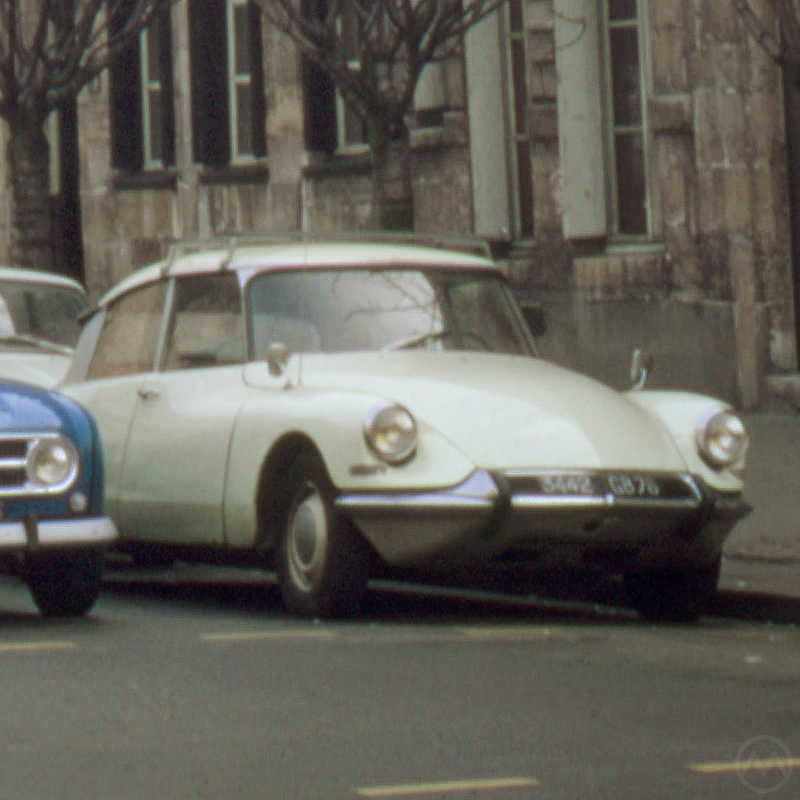
Last but not least, there’s a big Citroën parked up at the far right. It can be hard to tell individual models sometimes, but we think this is an early 60s Citroën ID19.
When the DS was introduced in 1955 it was quite a bit more expensive than the ancient, outgoing Traction Avant, which remained in production for a while alongside the new car. The ID was introduced in 1957 as a more affordable de-contented version of the fancy new design, with the same engine but a smaller carburetor and a conventional clutch and non-power steering in place of the DS’ hydraulic units.
Cheaper to buy and simpler to service and live with, the ID still had the DS’ hydraulic suspension and many of its most important engineering attributes. It was a big family car that got good gas mileage, and while it would’ve seemed exotic in the USA, the ID was a staple of middle-class motoring in France for decades. It would have been common to see one anywhere in France even well into the 1990s.
Rouen Reconstructed
Rue de l’Écureuil does not exist in this form today. In 1980, Rouen built the Saint Herbland Tunnel through downtown so that more squares could be open to pedestrians and businesses, but the buildings are all still there.
When the tunnel was expanded in the 1990s, a variety of ancient iron artifacts from the Roman era were uncovered and moved just up the road into the museum. Talk about mining the past!
Our photo today comes from the OldMotors archive.

